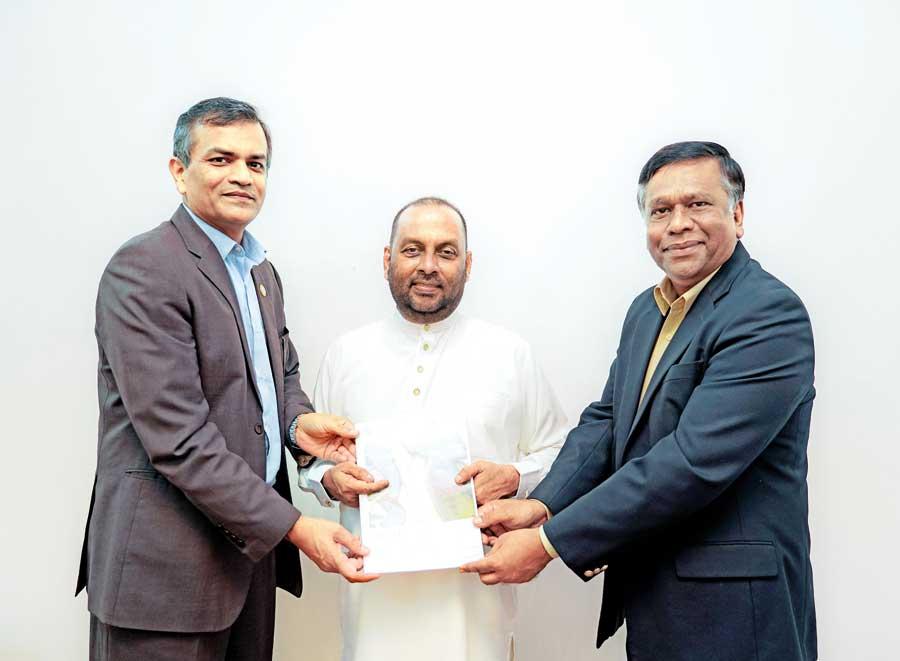Reply To:
Name - Reply Comment

Second joint FAO-WFP Crop and Food Security Assessment Mission report on Sri Lanka was handed over to Agriculture Minister Mahinda Amaraweera by FAO Representative for Sri Lanka and the Maldives Vimlendra Sharan and WFP Sri Lanka Representative and Country Director Abdur Rahim Siddiqui
Food security in Sri Lanka is improving across all provinces but is still prevalent within specific regions, the Crop and Food Security Assessment Mission (CFSAM) report revealed.
The report estimates 3.9 million people or 17 percent of the population is in moderate acute food insecurity, which is nearly a 40 percent decrease from June/July last year. Nearly 10,000 people are severely acute food-insecure, down from 66,000 people last year.
“The improvement in food security stems from better food consumption, which could be attributed to reduced food prices and improved incomes among farming communities during the harvesting period when the mission was carried out,” stated the report that is jointly published by the Food and Agriculture Organisation (FAO) of the United Nations and United Nations World Food Programme (WFP).
However, despite this positive trend, food insecurity remains high in certain districts, especially Kilinochchi, Nuwara Eliya, Mannar, Batticaloa, Vavuniya and Jaffna. The highest level of acute food insecurity was found within the tea plantation communities in the estate sector and among daily wage labourers and households that rely on social assistance programmes such as Samurdhi, as their main source of income.
Production of cereal, including rice and maize, across the two main cropping seasons in 2022/23 is forecasted at 4.1 million tonnes, 14 percent below the past five-year average, mainly due to poor plant nutrition caused by an inadequate supply of fertiliser and unaffordability of essential material inputs. However, the essential fertilisers distributed among smallholder farmers by the government, facilitated by the funds received from multilateral and bilateral donor agencies, have significantly impacted production, marking an improvement in the yield, with the productivity in the recently harvested 2022/23 Maha season being 12 percent higher than the 2022 Yala season.
The joint FAO/WFP Mission recommends providing immediate support to farmers, particularly by releasing the available fertiliser stocks to enhance production and productivity in the ongoing Yala season and making urgent policy decisions to import fertilisers in time for the 2023/24 Maha cultivation season.
The report also recommends any move for reducing or removing the fertiliser subsidy to be in a gradual and phased manner, giving adequate time to the farming community to adapt.
Other recommendations include the establishment of a ‘Fertiliser Task Force’ to streamline fertiliser procurement and distributions as well as to strengthen adaptive research on climate smart agriculture and sustainable farming practices to improve fertiliser use efficiency. Further, to minimise the impact on the livestock and fisheries sectors, the mission recommends providing adequate support to increase fodder and feed crop production.
Further, the agencies stressed the need to include continuing food and/or cash assistance to facilitate access to food among households most vulnerable to food insecurity. In the long-term, increased livelihood support to food-insecure households and resilience-building initiatives are also recommended to prevent them from compromising on productivity and their capacity to cope with future shocks.